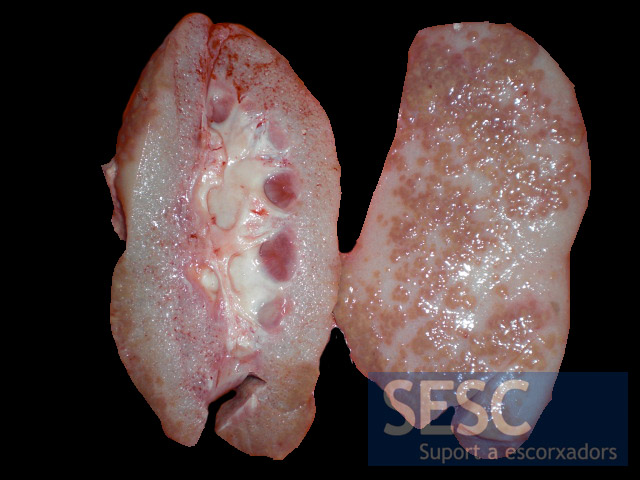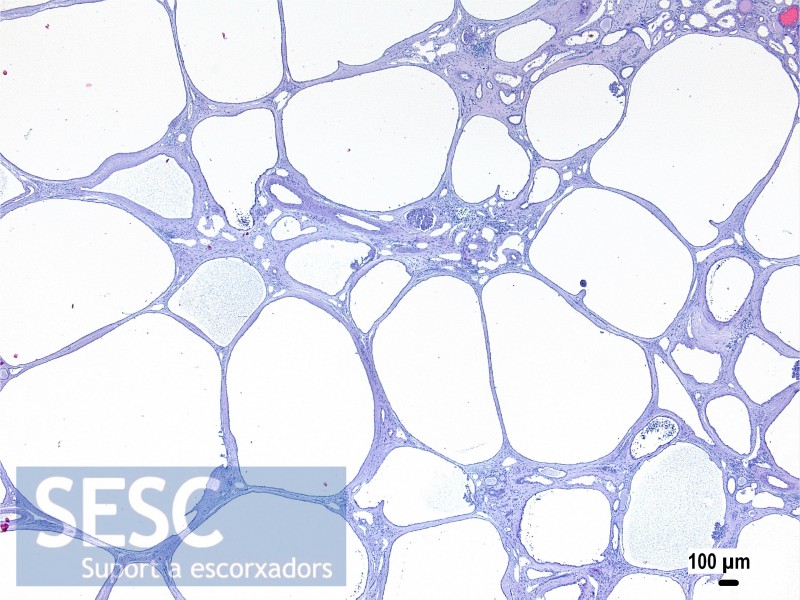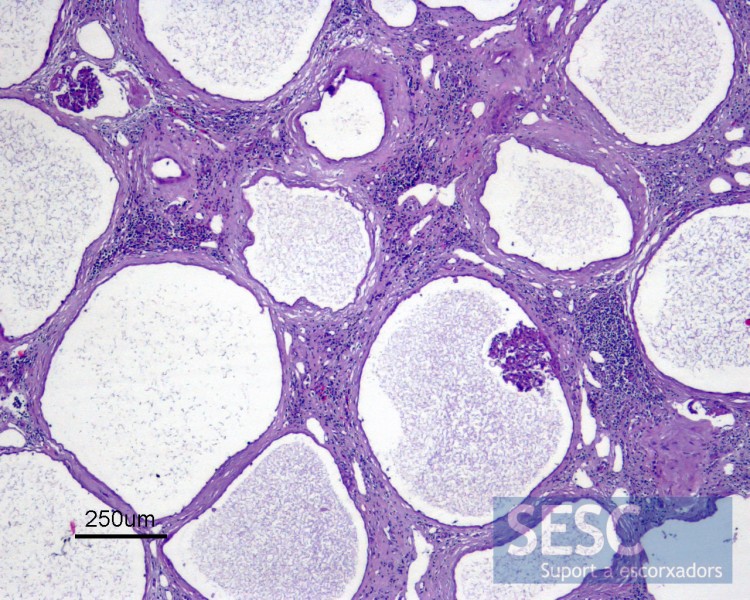Polycystic kidney in a pig
In a 6 months old hybrid pig a bilateral alteration was seen of the kidneys. These showed a loss of structure, with an obvious atrophy of the renal medulla and also, to a lesser extent, of the renal cortex parenchyma which presented with a microcystic appearance. The urethers were significantly dilated and thickened.
Histologically the renal parenchyma was almost entirely occupied by cysts lined by a simple epithelium, some of which contained glomerular structures more or less atrophied. In the interstitium fibrosis and a mild mononuclear inflammatory component could be appreciated. Scattered remnants of apparently normal (probably functional) renal parenchyma were also observed .
The lesions observed point to a disturbance of normal renal development causing microcystic structures in virtually all of the renal cortex and a significant loss of renal medulla. Although this can't be classified into known types of renal lesionin the differential diagnosis we may include:
- Congenital polycystic kidney. Mutations in the PKD gene(polycystic kidney disease) can result in this type of lesion which is often hereditary.
- Acquired Polycystic Kidney , perhaps as a result of a chronified interstitial inflammation or due to other causes that can trigger the onset of cysts (hypokalemia, some medications, etc).
- Renal dysplasia (defect in the formation of nephrons), also congenital. But the focal presence of correctly formed nephrons makes this option less likely.

Pale kidneys, with surface irregularities and atrophy of the medulla and the cortex. Histologically, prominent brown areas correspond to the fraction of normal renal parenchyma.

Up close, a multitude of small cysts can be seen that give a spongy appearance to the parenchyma as well as the lack of renal medulla.




2 comment(s)
Comment from LinkedIn’s Veterinary pathology group from Kendal Harr:
I am posting an article for comparative purposes and because I think it has a good pic of the gross description of poycystic kidney above. Unfortunately, our histo was cut from the article.
Just realized that I cannot attach to this thread
I posted the peer-reviewed pic of polycystic kidneys in color as well as the link to the published article here
https://www.facebook.com/UrikaLLC?ref=hl
Hey, also, please feel free to like the page
Comment from LinkedIn’s Veterinary pathology group from Dr. Lapointe:
Interesting case. Personally I might put renal dysplasia at the top of the differentials list – polycystic kidneys usually show large cysts, sometimes up to 1-2 cm diameter. In this case the cavities are much smaller and appear to mainly be abnormally dilated glomeruli, which could occur from downstream blockage or abnormal development. The presence of normal-looking renal structures does not exclude a diagnosis of renal dysplasia, in which the kidneys are usually a mixture of normal and abnormal nephrons. I would look closely for other histologic features of dysplasia, such as areas of undifferentiated mesenchymal connective tissue, tubules with abnormally hyperplastic lining, glomeruli with fetal appearance, and prominent periglomerular fibrosis.
thanks for sharing the case.